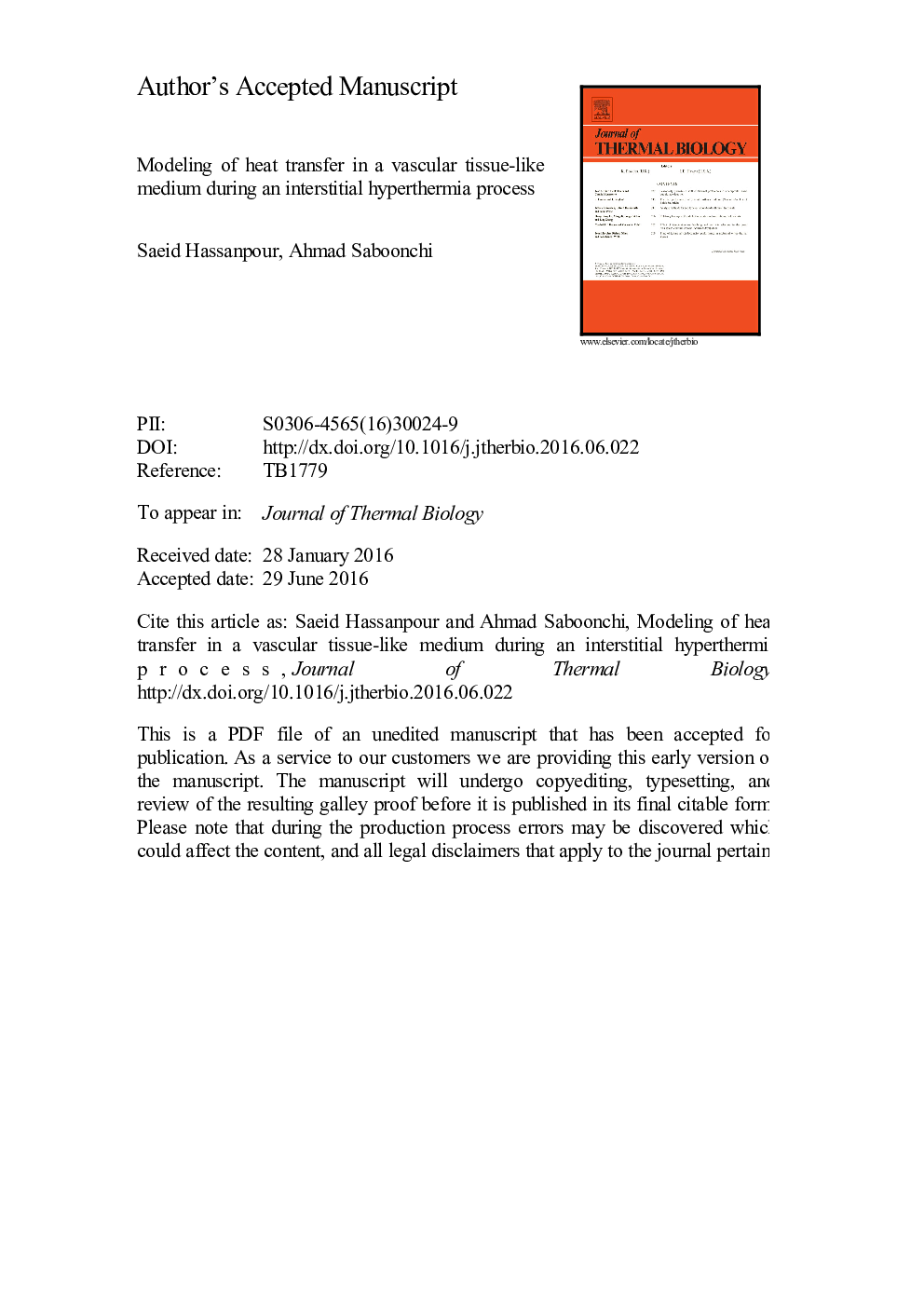| Article ID | Journal | Published Year | Pages | File Type |
|---|---|---|---|---|
| 5593480 | Journal of Thermal Biology | 2016 | 29 Pages |
Abstract
This paper aims to evaluate the role of small vessels in heat transfer mechanisms of a tissue-like medium during local intensive heating processes, for example, an interstitial hyperthermia treatment. To this purpose, a cylindrical tissue with two co- and counter-current vascular networks and a central heat source is introduced. Next, the energy equations of tissue, supply fluid (arterial blood), and return fluid (venous blood) are derived using porous media approach. Then, a 2D computer code is developed to predict the temperature of blood (fluid phase) and tissue (solid phase) by conventional volume averaging method and a more realistic solution method. In latter method, despite the volume averaging the blood of interconnect capillaries is separated from the arterial and venous blood phases. It is found that in addition to blood perfusion rate, the arrangement of vascular network has considerable effects on the pattern and amount of the achieved temperature. In contrast to counter-current network, the co-current network of vessels leads to considerable asymmetric pattern of temperature contours and relocation of heat affected zone along the blood flow direction. However this relocation can be prevented by changing the site of hyperthermia heat source. The results show that the cooling effect of co-current blood vessels during of interstitial heating is more efficient. Despite much anatomical dissimilarities, these findings can be useful in designing of protocols for hyperthermia cancer treatment of living tissue.
Related Topics
Life Sciences
Agricultural and Biological Sciences
Agricultural and Biological Sciences (General)
Authors
Saeid Hassanpour, Ahmad Saboonchi,
